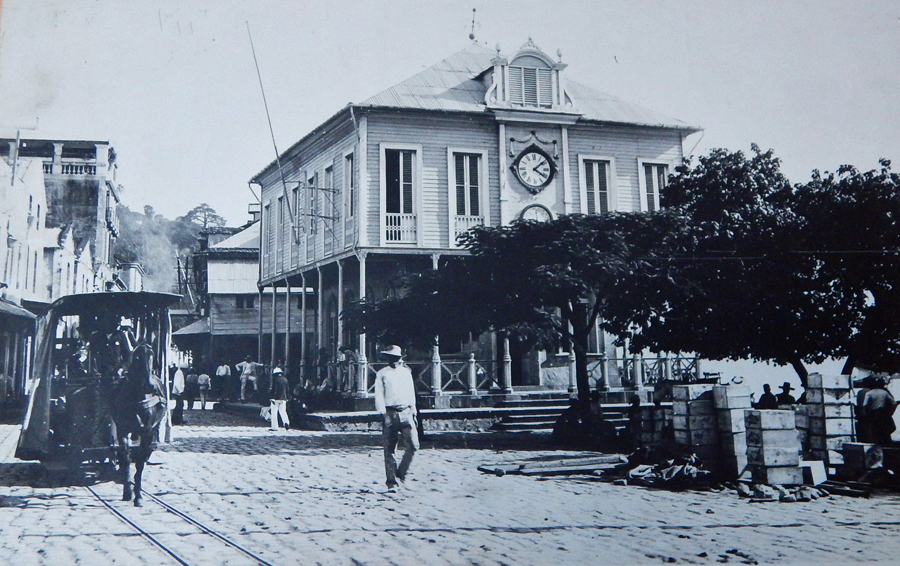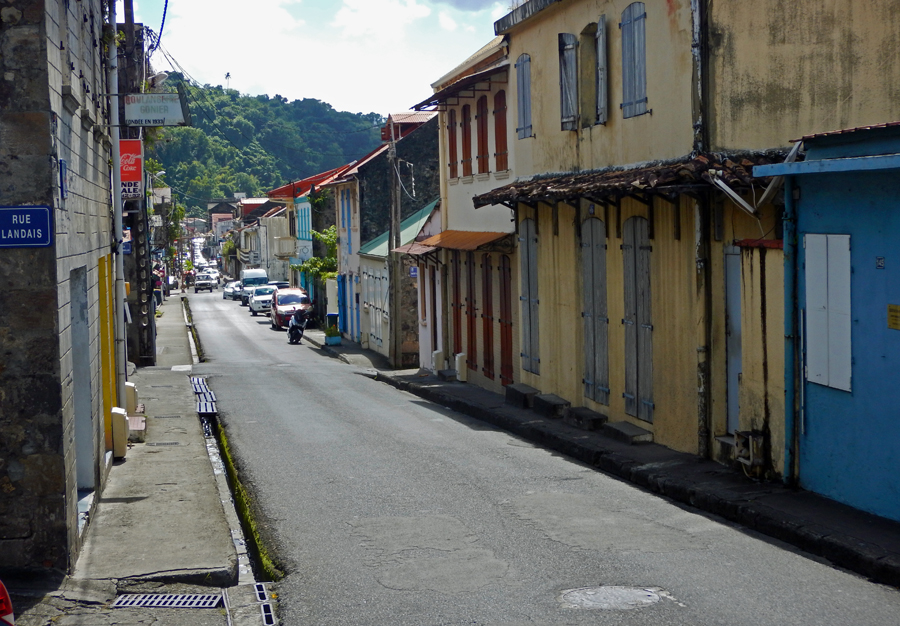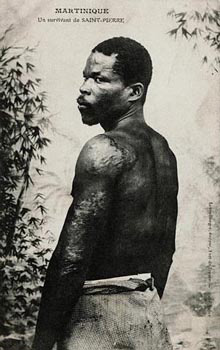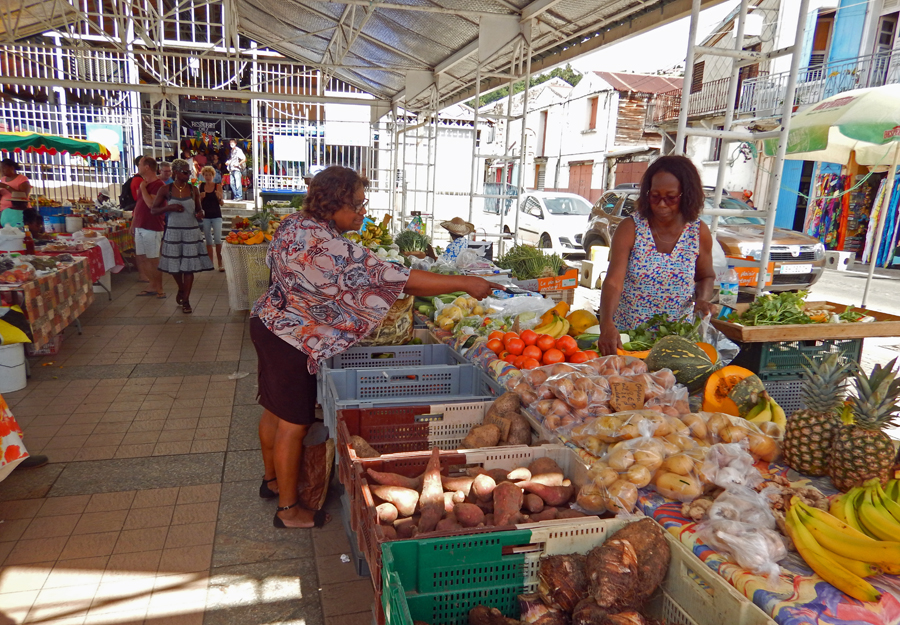We took Karl for a ride up to a little coastal town called Saint-Pierre. This is a pretty cool old town that was once the largest port on Martinique, back in the old days. Then, the volcano, Mount Pelée , erupted in 1902 killing all but one person in the town. About 28,000 people died as a cloud of toxic gas rolled down the mountain over the town. The one survivor was August Cyparis. The night before the eruption he was thrown into jail for his part in a bar fight. Some tales say he murdered a man in the fight. His jail cell was partially underground in the sheltered prison building. This saved his live.
If you read the Wikipedia version of the following days, it states that August was found by a rescue team. We like the museum’s version of events better. Their tale of events says August was found by his relatives who had come to loot the town after the toxic cloud cleared. They knew he was in jail and figured it wouldn’t hurt to stop by and see if he was still alive. They found him four days after the eruption barely alive and carried him to local priest where he was cared for. Then, the relatives disappeared with the loot from the town. August had burns on his arms and back, but lived to tell the tale. He was pardoned for his crimes. I am guessing it was because they had a hard time finding any witnesses.
Later August changed his name to a stage name, Ludger Sylbaris. He joined the Barnum & Bailey circus touring America as “the man who lived through Doomsday” or “the Most Marvelous Man in the World”. During his performance he would recount the horrors of the explosion and tell the tale of his survival. He is said to have removed his clothing stuffing it under the jail cell door and urinating on it to prevent the toxic gas from entering his cell. He was the first black man ever to star in the Barnum & Bailey segregated show. He died of natural causes in 1929.
We toured the museum in the town. It is a small one room building. Most of the displays had French placards. There were enough English signs to understand the displays. One side of the room is full of photographs of the town prior to the eruption. It shows a large bustling town with wooden tall-ships in the harbor. At the time, Sainte-Pierre and Fort-de-France were in a race to become the main port on Martinique. On the other side of the room is photographs taken after the eruption. A few buildings managed to survive. A mangled church bell separates the room giving one a real sense of the massive forces. I managed to sneak a few photographs before getting caught and shown a sign in about 50 languages saying, “No photos”.

The twisted church bell

Theatre de Pierre before eruption

Theatre de Pierre today

Commerce Building – Before eruption
Today, the settlement is a picturesque touristy town. People come here to see the old ruins. The new buildings and old ruins are intermingled. There are sidewalk cafes, gift shops and a beach known for people who like to glass hunt.

The deep drains on the side of the road had constant flowing water running off Mount Pelée. The old town was designed to use these drains as sewers.













